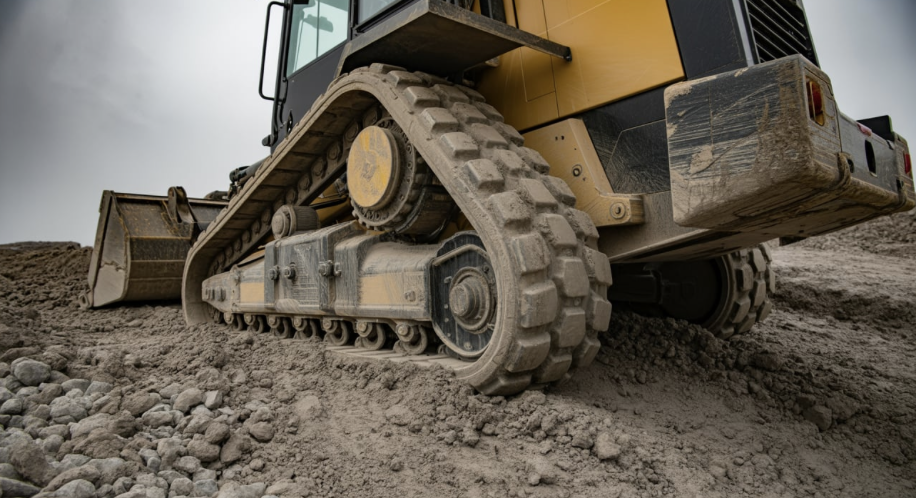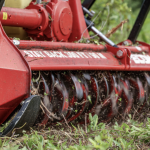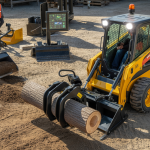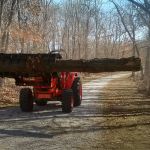
Loaders move dirt, rocks, and mud every day. They carry heavy loads across uneven ground. It’s a rough life for any machine. And yet, most attention goes to the engine or bucket, not the tracks. Tracks might be easy to overlook, but they are where the real work happens. Pick the wrong ones, and everything slows down. Pick the right ones, and suddenly the loader feels like it knows the terrain.
Getting the right ASV loader parts, especially tracks, isn’t fancy, it’s practical. It keeps machines moving, reduces maintenance headaches, and keeps operators from swearing at every slope or mud patch.
Why Tracks Are Everything
Tracks are the contact point with the ground. They decide whether a loader slides, sinks, or climbs without drama. Modern ASV loader tracks are built tough. They hold mud, gravel, or sand without tearing apart. They keep the machine steady even when the terrain doesn’t cooperate.
A loader with worn tracks is slow, unstable, and expensive to repair. One patch of soft soil can bring a day to a halt. Strong tracks do the opposite. They grip, balance, and spread the load so the loader doesn’t struggle with every bump.
Match Tracks to the Job
Every site is different. Tracks that work well in soft soil might be useless on rocks. Understanding the terrain is the first step in choosing the right parts.
Mud and soft soil – Go for a deeper tread. Grip is everything.
Hard or rocky ground – Smoother tracks reduce vibration and wear. Less bouncing, less frustration.
Mixed ground – Hybrid tracks handle both, giving a balance of durability and traction.
It sounds simple, but picking the wrong tracks is a daily headache. Jobs take longer. Machines strain. Operators get tired. Matching tracks to the terrain saves frustration and time.
Materials and Construction Matter
Tracks may look like thick rubber, but there’s a lot going on inside. Steel reinforcement, synthetic fibers, and tread patterns all matter. Some tracks push mud away, others maximize contact with the ground. Poor quality tracks break, stretch, or wear unevenly. Good ones last longer and keep loaders predictable.
Cheaper tracks might look tempting, but experience shows they cost more in the long run; repairs, downtime, and extra stress on the machine. Durable tracks are worth the investment, plain and simple.
Maintenance Isn’t Optional
Even the best tracks need attention. Cracks, worn tread, loose fittings—these are small things that cause big problems. Cleaning tracks after muddy work, checking tension, and spotting wear early prevents surprises.
Maintenance isn’t glamorous. But consistent care keeps loaders running smooth, protects other parts, and saves time. A machine with healthy tracks moves confidently. Operators notice the difference immediately.
Right Parts Make the Whole Loader Better
Tracks aren’t just a single component; they affect hydraulics, balance, fuel efficiency, and wear on the rest of the machine. Good ASV loader parts make life easier across the board. Fewer surprises, smoother operation, and better jobsite flow.
Fleets benefit too. Reliable tracks reduce downtime across multiple machines. Less waiting. Projects finish closer to schedule. Everyone notices when machines move predictably.
Pick a Supplier That Gets It
Parts are only as good as the source. A trusted supplier provides parts that fit specific ASV models, meet industry standards, and come with guidance if needed. Proper fit reduces installation mistakes and prevents avoidable downtime.
It’s not flashy branding or marketing buzz. It’s practical support. Planning for replacements, knowing when to upgrade, and sourcing quality tracks ensures the job keeps moving.
Bottom Line
Tracks might not be exciting, but they control everything on a loader. They decide grip, balance, and reliability. Strong tracks protect machines, improve efficiency, and make work less stressful.
Picking the right ASV loader parts isn’t about gadgets or upgrades. It’s about fundamentals; doing the work efficiently, safely, and without headaches. Tracks that fit, perform, and last make the difference between a smooth day on-site and one filled with delays and frustration.
Good tracks aren’t noticed until they’re missing. Then everyone feels it. Investing in strong, durable tracks pays off immediately in uptime, control, and operator confidence.












